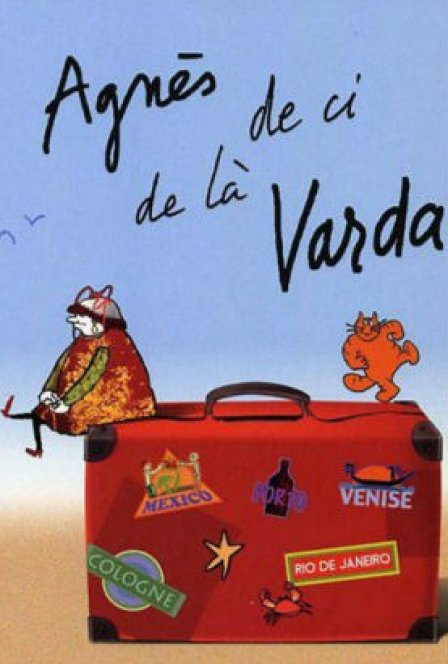Agnès Varda is known for her pioneering filmmaking starting in the 50s and her association with both the Rive Gauche (alongside Alain Resnais and Chris Marker) and the French New Wave movements. Her latest film — the follow-up to the acclaimed Beaches of Agnès (2008)— is From Here to There, a five part documentary which chronicles a year of global trotting and her encounters with various people. This filmic journey is multifaceted — part travelogue, part art documentary, and part visual essay on still versus moving images. As a travelogue, the viewer is treated to sights and sounds from Mexico, Portugal, Italy, Russia, and beyond; in the process we hear stories which trace Varda’s personal history and achievements. We follow her to Nantes to a celebration of her late husband, the filmmaker Jacques Demy (director of The Umbrellas of Cherbourg, among other films) and to the location and namesake of her first film, La Pointe Courte, where she banters playfully with the local fisherman who starred in it with his family.
But Varda is more than just a vacation diarist, and here she also presents us with a kind of art documentary, bringing creative luminaries to the screen including Chris Marker, Manuel de Oliveira, Christian Boltanski, Annette Messager, and Hans Ulrich Obrist. Varda asks these peers striking questions, prompting responses that only an individual as disarming and curious as herself could elicit. She shows the viewer an intimate view of Chris Marker at his studio, who we see only through his physical avatar, a painted cut-out of an orange cat named Guillaume-en-Egypte, or his digital avatar in Second Life, a tall, beefy man in a muscle shirt bearing Guillaume’s image. With delight, we watch Marker and Varda’s avatars take turns reclining on a giant cat sofa in a 3D low-polygon world, dancing wildly.
Differing from art documentaries like Art 21 which highlight the art stars of our time, Varda’s focus here is on the lives and interests of a diversity of people — her interest not just in art, but in in humanity at large. She de-emphasizes prestige and fame, her lens instead exercising a non-judgmental view of the world. From a pristine gallery displaying a sculpture made of rope, she takes us to the docks of a beach, and tells us, “Barrels, ropes, nets, are displayed so beautifully. They’d make installation artists red with jealousy.” Varda seems to be telling us through both her choice of images and the people she interviews that art is simply a condensation of the beauty in the world, and that everyone has a worthy story to tell. In one episode, she turns a journalist from interviewer to interviewee, opening her up to talk about her experience as a woman living with alopecia, a disease that causes hair loss. A documentary within a documentary, Varda show us excerpts from a film that the woman made about her condition. Indeed, it is this kind of material from people’s everyday lives that fuels Varda’s imagination and feeds her curiosity. Gazing out the window of a car in St. Petersberg, she tells us, “Everywhere I go, when I look at buildings and apartment windows, I know there are hundreds of thousands of people I don’t know. And they all have their lives.”
The ongoing conversation through all five films that make up From Here to There is Varda’s lifelong preoccupation with the concept of cinema versus photography. Through her installations we see the joy she takes in manipulating time. In one piece, she records a dancer, moving at five frames per second. Are these images photographs acting like film, or film acting like photographs? From Here to There highlights the unique ability of captured images to condense meaning, experience, and humanity in a way that enriches our experience of art and the everyday.

